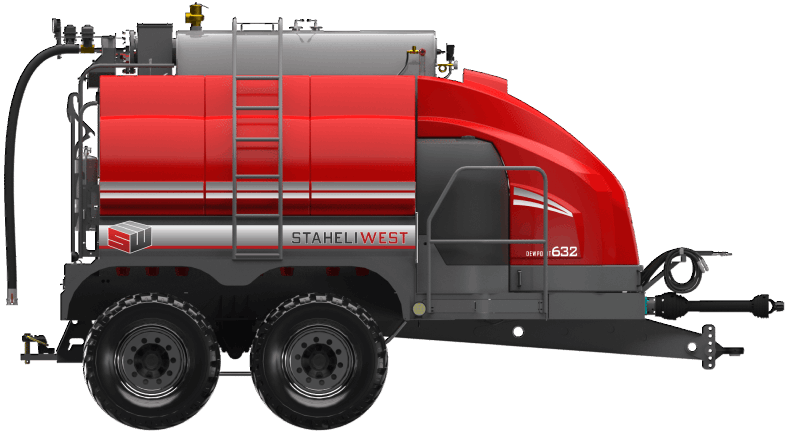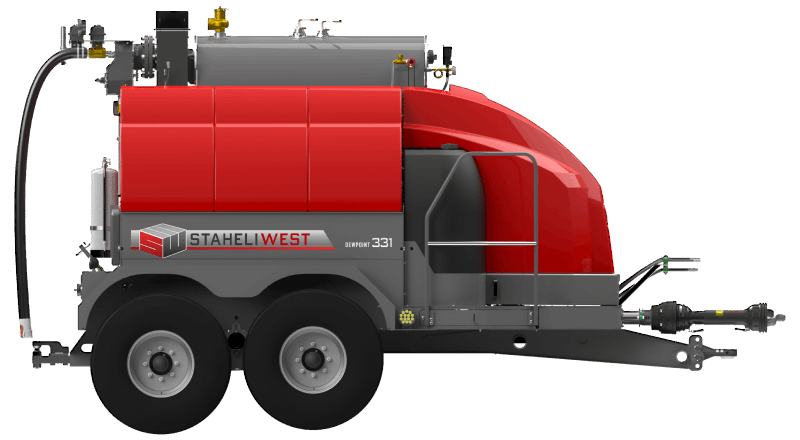
Baling Perfect Hay: How to Make Sure You Are Making High-Quality Steam
Introduction
Owning a DewPoint machine allows you to produce high-quality hay across a wide range of ambient conditions. However, attention to detail remains crucial for achieving the best possible hay. The DewPoint machine utilizes a boiler to produce high-quality steam, making it superior to other methods used for adding moisture to cured hay. Steam produced by our custom boiler enables the operator to steam and bale the hay all in one pass. Through years of testing and experience, we have developed an almost entirely automated control system that ensures top-quality steam, resulting in top-quality hay.
To achieve the highest quality steam, managing water quality settings in the DewPoint control system is key. Ensuring these settings are calibrated accurately not only maintains the health of your boiler but also guarantees high-quality hay bales, free from any wet spots or streaks. Let’s delve into the steps that will help you achieve optimal results and enhance your hay production process.
Water Quality Analysis
Start by obtaining a water test and recommendations report from your dealer. This report will provide crucial insights into your water’s composition, guiding us in setting up the DewPoint control system accurately.
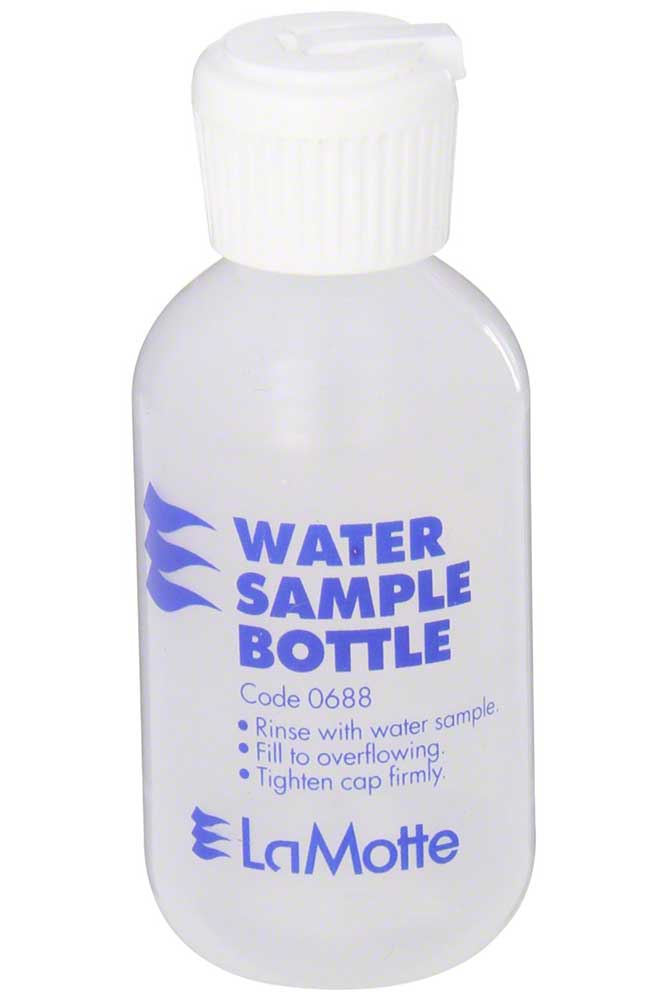
Take a water sample from the water source you plan on using to fill up the DewPoint machine. Culligan Labs will provide a detailed water report.
Setting Water Quality Parameters
Based on the water test report, we will enter recommended water quality settings into the DewPoint screen for an appropriate blowdown schedule. These settings are vital for maintaining optimal boiler water quality, preventing issues like water carry-over into hay bales.
 Input your PPM from the water test of the water from the source you plan on using to fill up your DewPoint machine. This number will determine the frequency and duration of the Automatic Surface Water Blowdown.
Input your PPM from the water test of the water from the source you plan on using to fill up your DewPoint machine. This number will determine the frequency and duration of the Automatic Surface Water Blowdown.Understanding Blowdown Principles
The frequency and volume of blowdowns align with your water quality test results, maintaining a clean and efficient boiler system. If you notice water carryover or “foaming” during field operation you should check your supply water source to be sure your water treatment is working properly. You may also need to change the settings in the water quality screen. “Foaming” or water “carry-over” occurs because of high surface tension on the surface of the boiler water. It is the same reaction that occurs when a pan of spaghetti noodles cooking on the stove boils over. Surface tension is increased because of high concentrations of contaminants left behind in the boiler water as steam is produced and discharged from the boiler during field operation. The blowdown process removes some of the contaminated water in a controlled manner and allows new clean supply water to replace the old.
Automatic Field Operation Settings
Boiler surface blowdowns are done automatically during field operation based on the water quality settings entered by the operator. An electronic blowdown valve and surface skimmer tube in the boiler are controlled by the DewPoint Control System. This blowdown skims the contaminated surface water in the boiler, ensuring that only high-quality steam makes it on the hay during baling.
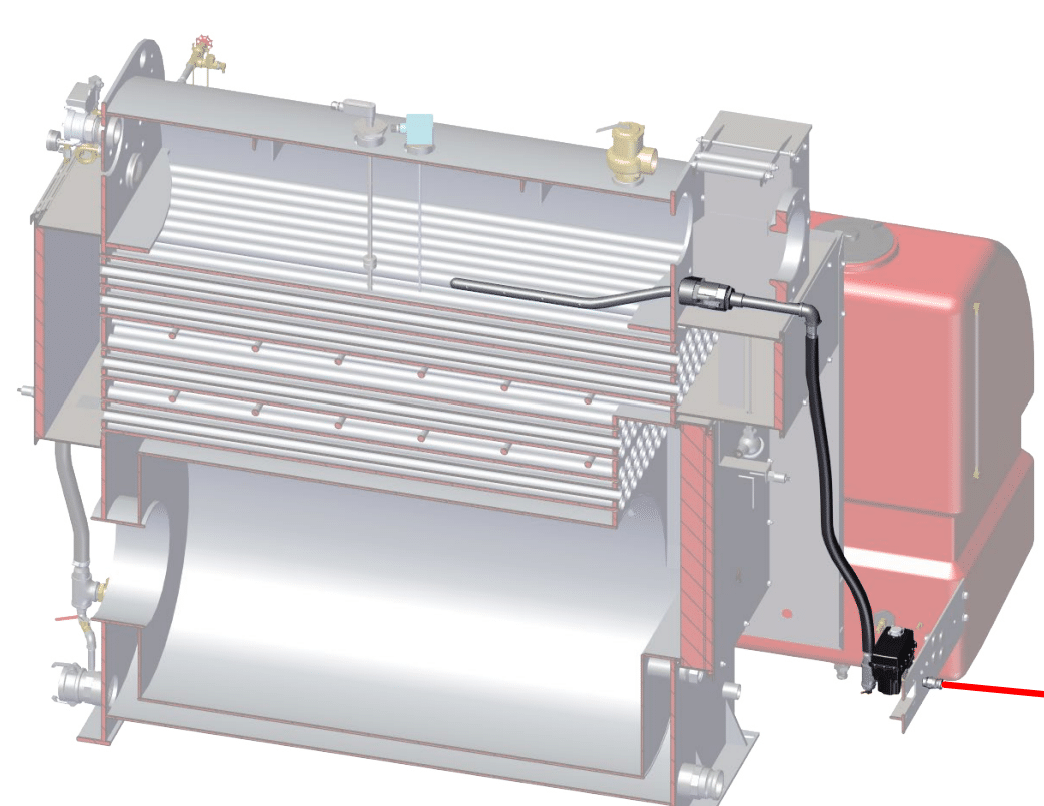 The skimmer tube sucks foamy, contaminated water off of the top of the water in the boiler to prevent foaming and water carry-over into the steam.
The skimmer tube sucks foamy, contaminated water off of the top of the water in the boiler to prevent foaming and water carry-over into the steam.Manual Bottom Blowdown
At the start of each operational day, perform a manual bottom blowdown by draining 30–40 gallons of water from the boiler in a safe location using the 2-inch boiler drain valve at the rear bottom end of the boiler. An on-screen reminder will appear at each start-up of the DewPoint machine.
 Drain 30-40 gallons out of the bottom of the boiler by opening the boiler drain valve. When the DewPoint machine has not been running for a while, the contaminants in the water will settle to the bottom of the boiler. This manual blowdown is a method of getting rid of the contaminants.
Drain 30-40 gallons out of the bottom of the boiler by opening the boiler drain valve. When the DewPoint machine has not been running for a while, the contaminants in the water will settle to the bottom of the boiler. This manual blowdown is a method of getting rid of the contaminants.Water Purge System: Preventing Water Carryover
In addition to the blow-down procedures, DewPoint machines have a steam manifold and water purge system specially designed to prevent water from carrying over into the steam hoses and into the hay. The water purge actuator opens to purge excess water in the steam manifold back into the rear supply tanks.
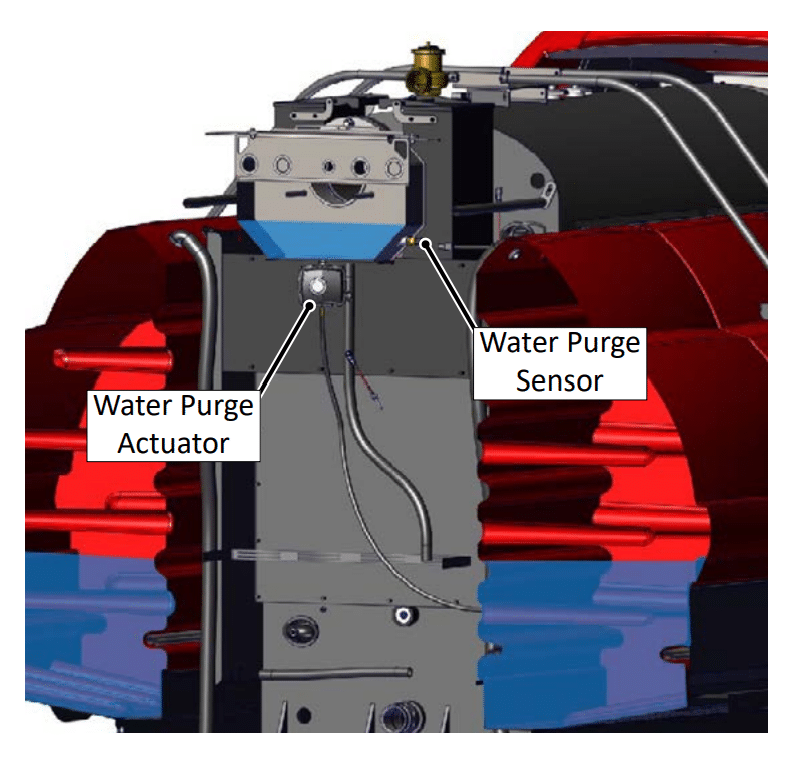 Water that may be present in the steam coming out of the boiler will be caught by the steam manifold before going into the steam hoses and into the hay.
Water that may be present in the steam coming out of the boiler will be caught by the steam manifold before going into the steam hoses and into the hay.Adjusting Water Purge Valve Open Time
On older DewPoint models, you can customize the water purge valve open time through the DewPoint system’s menu. This adjustment allows you to fine-tune water purge intervals based on operational needs. On new DewPoint models, the water purge actuator opens when the water purge sensor detects water. The water purge system on all DewPoint models is automated, so you don’t need to remember to turn it on or off. Regular inspection and cleaning of the valve is important to make sure the water is flowing properly.
By mastering water quality settings and diligently following maintenance procedures, you can eliminate wet spots and streaks in hay bales, enhancing overall hay quality.
Should you have any questions or require further assistance, please do not hesitate to reach out. We are committed to supporting you in achieving excellent hay baling results.

